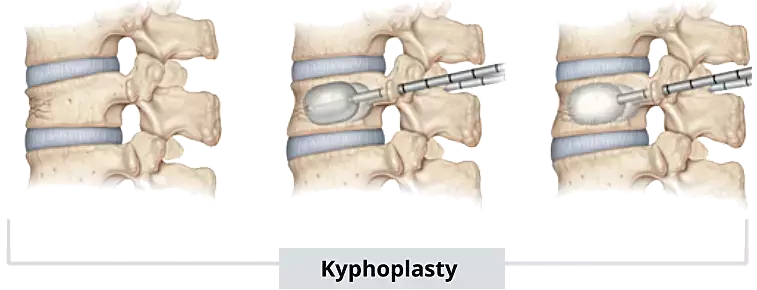Osteoporotic vertebral compression fractures (OVCFs) have become a significant public health concern due to the high morbidity and limited efficacy of conservative treatment. Conventional unilateral percutaneous vertebral kyphoplasty (UPKP) is beset by technical limitations, including the uneven distribution of cement and the inherent risk of leakage. Conversely, percutaneous curved kyphoplasty (PCKP) involves the creation of an accessible contralateral bone tunnel through a curved bone auger, a technique that, in theory, optimizes cement distribution. However, the clinical benefits of PCKP remain a subject of debate.Yang Fuguo et al conducted a study to prospectively compare the difference in near- and midterm efficacy between PCKP and UPKP for the treatment of single-segment OVCFs, and to clarify the clinical value of PCKP. A total of 89 patients with single-segment OVCFs were divided into two groups: the PCKP group (n = 43) and the UPKP group (n = 46). At the 12-month follow-up, pain visual analog scores (VAS, Oswestry Dysfunction Index (ODI)) and cement distribution were assessed preoperatively, at 2 days, 3 months, and 12 months postoperatively. The duration of surgery was recorded, as were the number of fluoroscopy, bone cement dose, and complications. Compare the two sets of parameters. Key findings of the study: (1) Functional improvement: the VAS score and ODI of patients in PCKP group was better than that of UPKP group at 2 days postoperatively (P 0.05). (2) Bone cement: the amount of cement used in the PCKP group was significantly more than that in the UPKP group (P < 0.05), and the rate of excellent distribution and leakage rate were better (P 0.05). (4) Complications: there was no difference in the rate of re-fracture (P > 0.05), and the risk of leakage was lower in the PCKP. The authors concluded – “Both PCKP and UPKP can effectively treat single-segment OVCFs, but PCKP achieves better control of spatial distribution of cement through curved bone drilling technique and significantly reduces the risk of leakage, especially for patients with moderate and severe fractures, and PCKP has more advantages in early pain relief, but near- and intermediate term follow-up shows that the efficacy of the two converge.”Further reading: Comparison of near‑ and midterm outcomes of two unilateral percutaneous translaminar vertebral kyphoplasty procedures for the treatment of single‑segment OVCF: a single‑center randomized controlled study Yang Fuguo et al European Journal of Orthopaedic Surgery & Traumatology (2025) 35:142 https://doi.org/10.1007/s00590-025-04241-4
